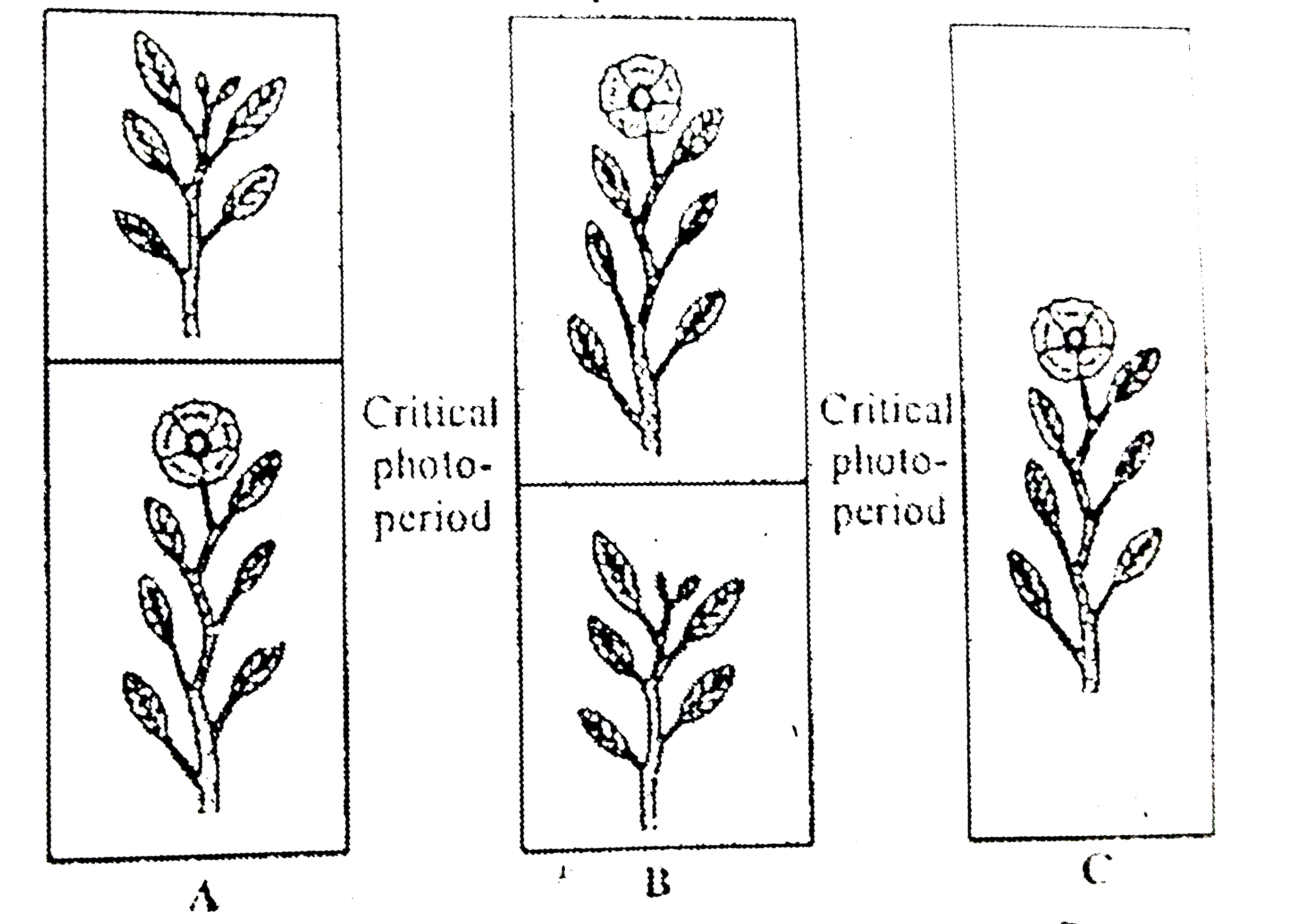Photoperiodism is due to hormone
florigen
GA
2,4-D
cytokinin
Step-by-Step Solution
1. Understanding Photoperiodism:
- Photoperiodism refers to the physiological response of plants to the relative lengths of light and dark periods. It is crucial for regulating various developmental processes, particularly flowering.
2. Identifying the Hormones:
- The options provided are Fluorigen, Gibberellic Acid (GA), 2,4-Dichlorophenoxyacetic acid (2,4-D), and Cytokinins. Each of these hormones has different roles in plant growth and development.
3. Role of Gibberellic Acid (GA):
- Gibberellic Acid is known to stimulate flowering, especially in long-day plants. It plays a significant role in promoting reproductive processes in these plants.
4. Evaluating Other Options:
- Fluorigen: This hormone is involved in flowering but is not specifically tied to long-day plants.
- 2,4-D: This compound is primarily used as a herbicide and mimics auxin, promoting normal cell development in tissue culture but does not directly influence photoperiodism.
- Cytokinins: These hormones promote cell division and elongation but do not specifically stimulate flowering in long-day plants.
5. Conclusion:
- Based on the roles of the hormones discussed, the correct answer to the question "Photoperiodism is due to hormone" is Gibberellic Acid (GA), as it specifically stimulates flowering in long-day plants.
Final Answer:
The correct answer is Gibberellic Acid (GA).
---
- Photoperiodism refers to the physiological response of plants to the relative lengths of light and dark periods. It is crucial for regulating various developmental processes, particularly flowering.
- The options provided are Fluorigen, Gibberellic Acid (GA), 2,4-Dichlorophenoxyacetic acid (2,4-D), and Cytokinins. Each of these hormones has different roles in plant growth and development.
- Gibberellic Acid is known to stimulate flowering, especially in long-day plants. It plays a significant role in promoting reproductive processes in these plants.
- Fluorigen: This hormone is involved in flowering but is not specifically tied to long-day plants.
- 2,4-D: This compound is primarily used as a herbicide and mimics auxin, promoting normal cell development in tissue culture but does not directly influence photoperiodism.
- Cytokinins: These hormones promote cell division and elongation but do not specifically stimulate flowering in long-day plants.
- Based on the roles of the hormones discussed, the correct answer to the question "Photoperiodism is due to hormone" is Gibberellic Acid (GA), as it specifically stimulates flowering in long-day plants.
The correct answer is Gibberellic Acid (GA).
Topper's Solved these Questions
- PHOTOMORPHOGENESIS IN PLANTSBOOK - ICSECHAPTER - PHOTOMORPHOGENESIS IN PLANTSEXERCISE - REVIEW QUESTIONS(FILL IN THE BLANKS)
5 Videos
- PHOTOMORPHOGENESIS IN PLANTSBOOK - ICSECHAPTER - PHOTOMORPHOGENESIS IN PLANTSEXERCISE - REVIEW QUESTIONS (VERY SHORT ANSWER TYPE QUESTIONS ( WITH ANSWERS ))
20 Videos
- NEURAL CONTROL AND COORDINATIONBOOK - ICSECHAPTER - NEURAL CONTROL AND COORDINATIONEXERCISE - (Review question) long answer
20 Videos
- PHOTOSYNTHESIS IN HIGHER PLANTS BOOK - ICSECHAPTER - PHOTOSYNTHESIS IN HIGHER PLANTS EXERCISE - REVIEW QUESTIONS (QUESTION BASED ON EXPERIMENTS)
7 Videos
Similar Questions
Phototropism is due to the hormone
(a) IAA
(b) GA
(c) 2-4 D
(d) Cytokinin
View SolutionPhotoperiodism affects
View SolutionPhotoperiodism is probably due to the sythesis of
View SolutionPhotoperiodism is associated with the formation of
View SolutionPhotoperiodism was first characterized in
View SolutionRefer the given figures on photoperiodism and select the correct option.

View SolutionWith respect to photoperiodism, site of perception of light/ dark duration is
View SolutionPhotoperiodism was first characterised in
(a) Tabacco
(b) Potato
(c) Tomato
(d) Cotton
View SolutionAssertion (A). Sugar Beet, Cabbatge, Carrot like plants are monocarpic
Reasson (R ). Both vernalisation and photoperiodism are related to flowering
View SolutionPhotoperiodic stimulus is perceived by
(a) Meristematic cells
(b) Leaves
(c) Flowers
(d) Seeds
View Solution
